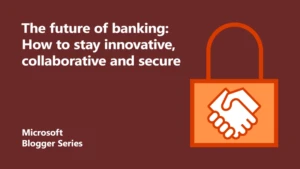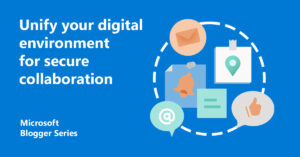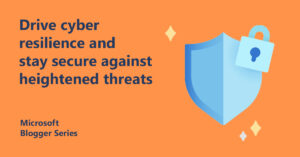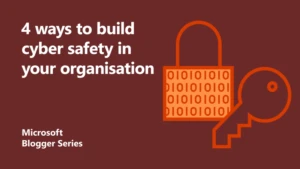
Tag: Security
Explore:


The future of banking: How to stay innovative, collaborative and secure
In the current economic environment, banks and other financial services firms recognise the need to embrace digital transformation to get maximum value from their technology investments and do more with less.
How FSI organisations should balance supply chain and concentration risk
I speak to a lot of people about the security challenges facing financial services organisations in my role as Cyber Security Sales Director at Microsoft. The topics of those conversations change as the threat landscape evolves and new approaches to managing those threats emerge.
Unify your digital environment for secure collaboration
To stay secure in an everchanging threat landscape, organisations must build cyber resilience and secure collaboration across their digital environment. In fact, many leaders view security as an enabler of business. Those who feel the most vulnerable are the most mature in their security posture – 83 percent according to our research.
Drive cyber resilience and stay secure against heightened threats
As the landscape of work has changed, so have cyberthreats. Technology has enabled the rise of remote and hybrid working. However, this increasingly complex environment also means there’s more vulnerabilities. Leaders have seen three trends rise: Stay competitive in a fast-evolving business landscape.Defend against cyber threats.
An introduction to DevSecOps
DevSecOps combines GitHub and Azure products and services to help DevOps and SecOps teams collaborate in building more secure apps.
Getting started with Kubernetes, Azure and AKS
There are ways to secure data at rest and in transit, but you need to protect your data from threats as it’s being processed. With Kubernetes, now you can.
Considerations for Securing your Applications
As organisations navigate digital transformation – there is no topic more important than defending yourself from attack.
How AI and collaboration are shaping a smarter future for anti-money laundering
Traditionally, banks have thought of anti-money laundering and know your customer (AML-KYC), fraud and cybercrime as three separate problem sets. They each have their own distinct teams with their own independent processes, tools and reporting structures. AML-KYC has been the primary focus for financial regulators.
The security tools jigsaw puzzle
At Microsoft Ignite in Nov 2021, some of Azure’s security products were renamed to show they protect more than just Azure. Let’s take those product names and build a jigsaw puzzle of security tools!
4 ways to build cyber safety in your organisation
Discover how to build cyber safety, manage the changing threat landscape and support employees in the hybrid workplace.
